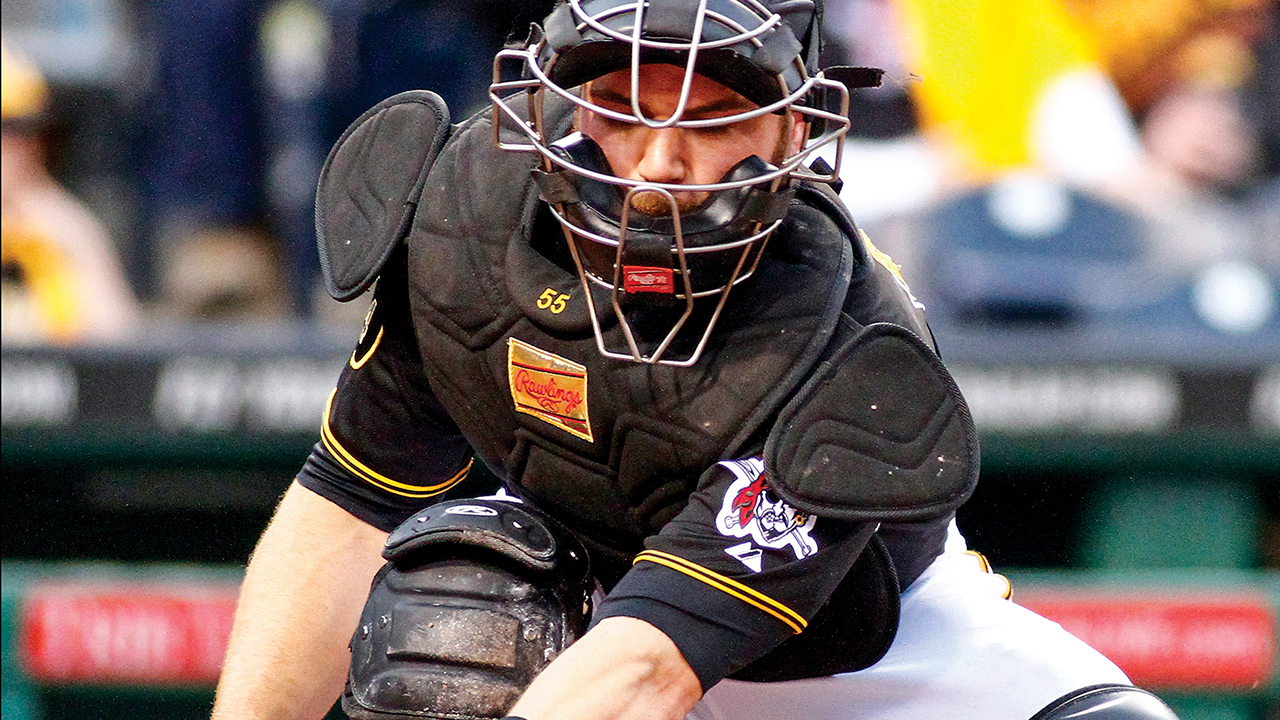Russell Martin got paid, and he has data-driven appreciation for his subtle skills to thank for it.
Two years ago, Russell Martin was a free agent with pedigree. The 29-year-old was a three-time all-star and had just hit a career-high 21 home runs in helping the New York Yankees to their second straight post-season appearance with him behind the plate. His eventual reward? A two-year, $17-million deal from the Pittsburgh Pirates—not too shabby, but a fairly ordinary contract by the inflated standards of MLB.
After helping the Pirates to their first winning season in 20 years in 2013 and having a career year in 2014, Martin was a free agent again this November, but this time the landscape was completely different.
Suddenly, the Canadian backstop was on a beach and waves of money were rolling in at him.
The Chicago Cubs wanted to pay him $70 million over four years. The Los Angeles Dodgers offered Martin $74 million to return to the franchise where he started his career. The Pirates were in the mix, too. Finally, the Toronto Blue Jays swept in and signed him to a five-year, $82-million deal, the fifth-largest for a catcher in history.
What happened? How did Martin nearly quintuple the amount a team was willing to shell out on him even though he was two years older playing a position that traditionally doesn’t age well? The answer—or at least one of them—lies in the way the baseball industry has used data and video technology to measure things that even a few years ago were articles of faith.
Specifically, the industry has put a dollar value on the black art of pitch framing—the knack of receiving pitches screaming past the edge of the plate with the touch of a safe cracker. Where a lesser catcher might clumsily snatch at a ball running away from the zone or grab a low strike with his glove facing down, a skilled framer makes what’s called “a good presentation,” maintaining yogi-like stillness as he cradles the pitch. That can give the pitcher the benefit of the doubt in the split second the umpire has to make the call. “I take a lot of pride in [pitch framing],” Martin says. “It’s getting talked about more than it used to, but they are little subtle things that I can bring to a team.”
And, luckily for Martin, nothing in MLB—no matter how subtle—goes unnoticed anymore. Today, each of the 700,000 or so pitches thrown each season are tracked by cameras showing their velocity, trajectory and location, and logged in a video archive. With all that information just sitting there, the sport is undergoing the equivalent of the Enlightenment. There’s a belief that no question need go unanswered.
All the data has taught us that some catchers—receiving the exact same types of pitches and working in front of the same umpires—were able to earn more called strikes than their peers. And it’s more than just a strike here or there. A starting catcher will likely receive more than 17,000 pitches over the course of a season. At that scale, strikes saved or earned add up. According to StatCorner.com, Martin’s ability to frame pitches could save the Blue Jays 30 runs next season compared with Dioner Navarro, the team’s incumbent.
Those 30 runs could be worth as much as two wins next year, which are worth about $6 million each on the open market. Couple that with Martin’s hitting prowess, his arm and his reputation as both a leader and a pitching soothsayer, and he becomes a valuable package.
Nearly five times more valuable than he was just two years ago, judging by his new contract, suggesting the right thing for Martin to do when he gets his first paycheque is to find the analysts in the Jays’ baseball ops department—the guys who put a dollar value on his safe-cracker hands—and buy them a drink.
This story originally appeared in Sportsnet magazine. Subscribe here.

